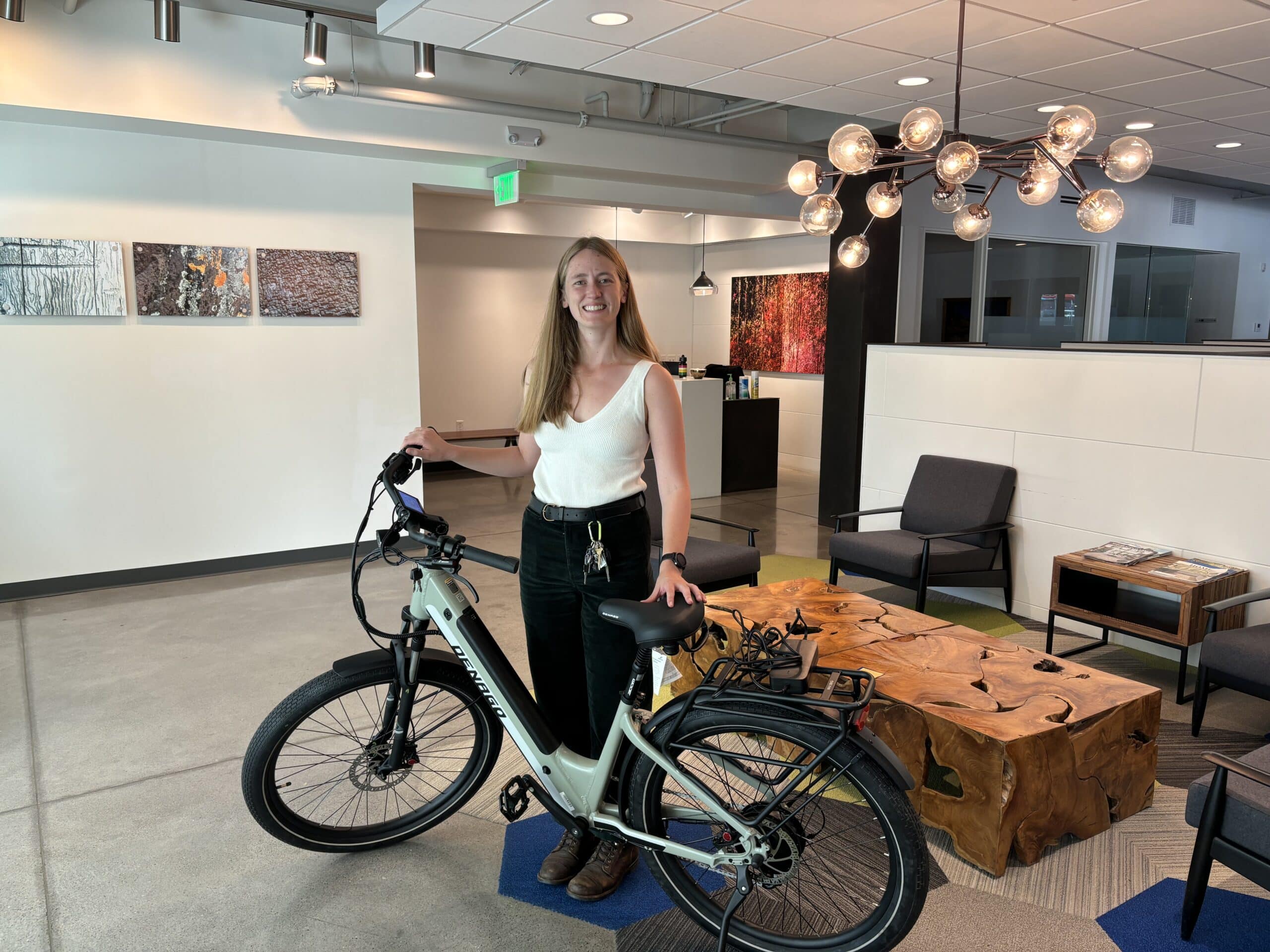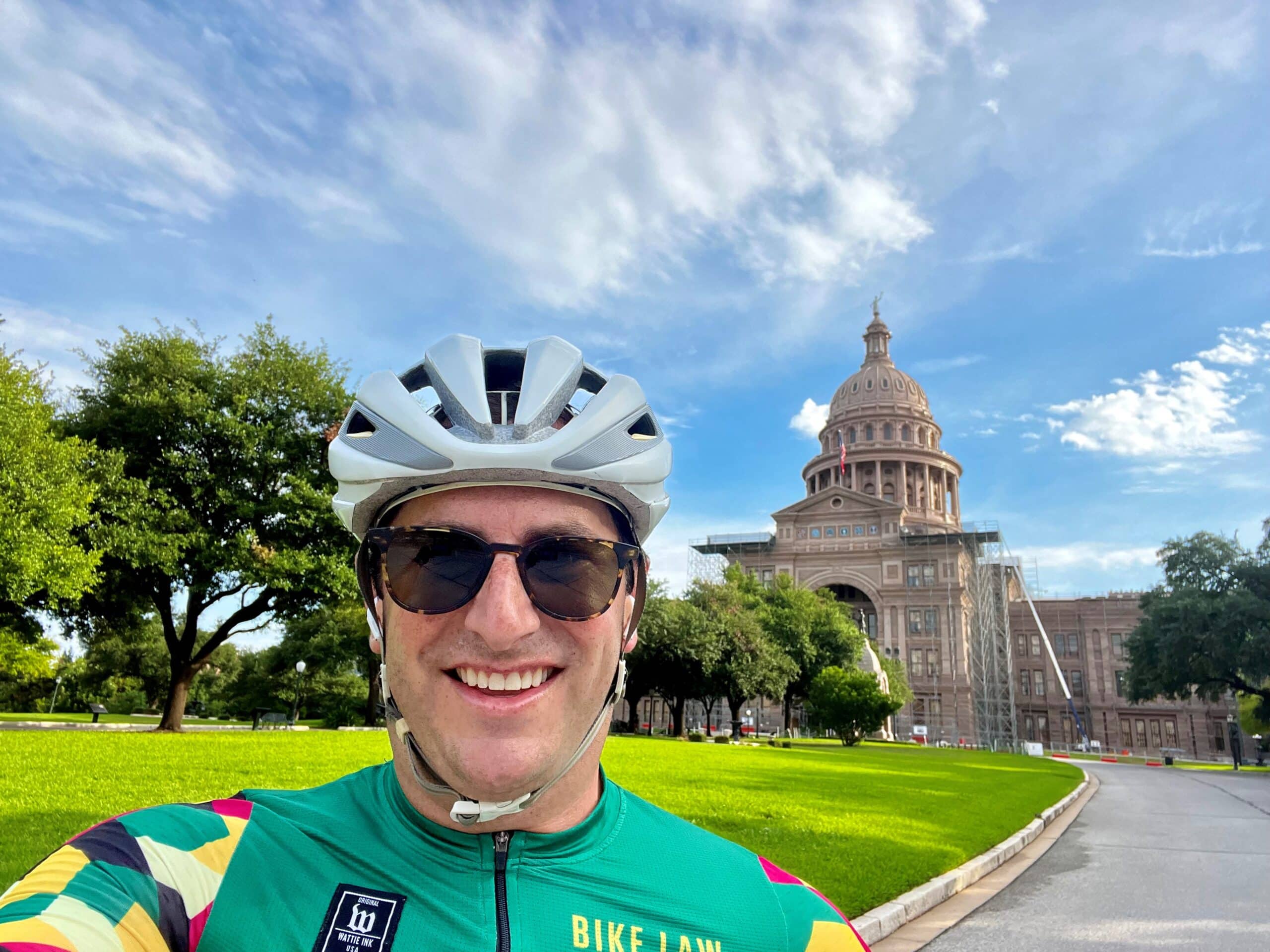We deserve better routes to ride, and we deserve better trained police officers.
Here’s a video of an off-duty Charleston police officer confronting a cyclist (who had been cycling against traffic on a one-way street), preventing him from leaving, and getting physical and ultimately schooled. The officer is currently on administrative leave pending investigation.
There’s a lot to discuss.
We often get complaints from cyclists harassed by police officers. The story is typical. Then cyclist is perceived (rightly or wrongly) of having ridden illegally. The police officer — instead of warning and teaching about cycling safety — becomes a bully, wrongly quotes bike laws (saying, for example, that bikes belong on sidewalks), issues harsh tickets (we had one case where a cyclist was given three tickets (8 points on his driver’s license) for a minor infraction late at night with no cars around (we won), and sometimes gets aggressive. That’s what happened here.
But first, a disclaimer. A major one. We’ve worked with great police officers over the last 15 years, including here in Charleston. We have utmost respect and great relationships with many departments and many officers. In some of our most serious cases, it has been the police who have been our strongest allies. With that being said, there’s no question that the lack of bike law training for police officers is a problem across the country.
[Many of you watched our video of a Michigan officer ticketing a cyclist for riding correctly. The case went up two levels of appeal before the officer’s mistake was corrected by the courts. Congrats again to Bryan and his team.]
Here’s the context: Charleston is a maze of one-way streets. The reason for them was explained here. It is especially crazy around the College of Charleston.
 The first problem is the total lack of sane transportation planning in the City of Charleston. The one-way maze is the most significant reason why cycling and walking are so dangerous here. Don’t believe me? Take a bike ride up Coming Street (on the left on the map) from Wentworth to the Crosstown (the only South to North route from the College). Coming Street (like many of our other one-way streets) is an autobahn, where posted speed limits are irrelevant and drivers haul @$$ to get out of downtown. Two pedestrians have been killed on Coming Street in recent years. Where, then, are cyclists supposed to ride? I’ve ridden these streets daily for 20 years and I have no idea.
The first problem is the total lack of sane transportation planning in the City of Charleston. The one-way maze is the most significant reason why cycling and walking are so dangerous here. Don’t believe me? Take a bike ride up Coming Street (on the left on the map) from Wentworth to the Crosstown (the only South to North route from the College). Coming Street (like many of our other one-way streets) is an autobahn, where posted speed limits are irrelevant and drivers haul @$$ to get out of downtown. Two pedestrians have been killed on Coming Street in recent years. Where, then, are cyclists supposed to ride? I’ve ridden these streets daily for 20 years and I have no idea.
It’s the officers fault, but bad transportation planning is to blame.
The cyclist in the video (who was cycling from one job to another) was riding against traffic on St. Philip (the exclamation point on the map). It’s against the law to do so. But students and others do it everyday, all day. We have worked with the Charleston Police Department to teach safe bicycling, but folks are going to continue to ride from Point A to Point B, especially when the legal route is unsafe. [As a commentator pointed out on Facebook, you can see at least two cyclists make improper turns in the video.]
The officer was at a stoplight and accelerated on green. Seeing the cyclist in front of him, he stops the car; the cyclist (on a beach cruiser with coaster brakes) slows down. It’s hard to tell, but there may have been a very minor bump at essentially zero miles per hour. It’s out of our screen, but here’s another video that shows the bike and the car interacting.
What happens next is nuts. The officer takes matters into his own hands, literally, as he prevents the cyclist from leaving and starts a fight.
First, he pulls on the cyclist’s backpack, causing him to jump off the bike, which falls to the ground in the middle of the street. The cyclist attempts repeatedly to leave the scene, but the officer keeps grabbing him and standing in his way. What was the officer’s goal? He does not reach for his phone or otherwise attempt to report the incident. He just stands in the middle of the street, confronting the biker. What was he trying to do? Look, we’ve all had bad days, and it looks to me that the officer lost his cool and was spoiling for a fight.
The cyclist, after a while, throws a punch, but then tries to leave again and again.
Here’s the scary part: the officer attempts to take the cyclist to the ground by grabbing him, hooking his leg behind the cyclist’s leg, and pushing. This is a very dangerous move, because had he been successful, the cyclist would have landed hard on the concrete. But, somehow, the officer’s move fails, and it is he who is overpowered and taken down! After the reversed take down, the cyclist restrains from taking advantage of his superior position. Would the cop have shown similar restraint had he won the exchange?
[As an aside, I / Peter am a beginner in Brazilian Jui Jitsu; bike lawyer Jim Freeman in Chicago is an upper belt. I am convinced that BJJ training should be a focus of law enforcement. Had the officer had more training, he might have been more calm and better able to handle the situation. As it is, everyone is lucky that his takedown failed and neither was hurt badly.]
We deserve better routes to ride, and we deserve better trained police officers.
What do you think?

Bike Law founder and bicycle crash lawyer Peter Wilborn has raced, toured, commuted, and ridden his bike daily for fun. In 1998, Peter had a bike tragedy in his own family, realized firsthand the need for lawyers who understand cycling, and devoted his law practice to Bike Law.








